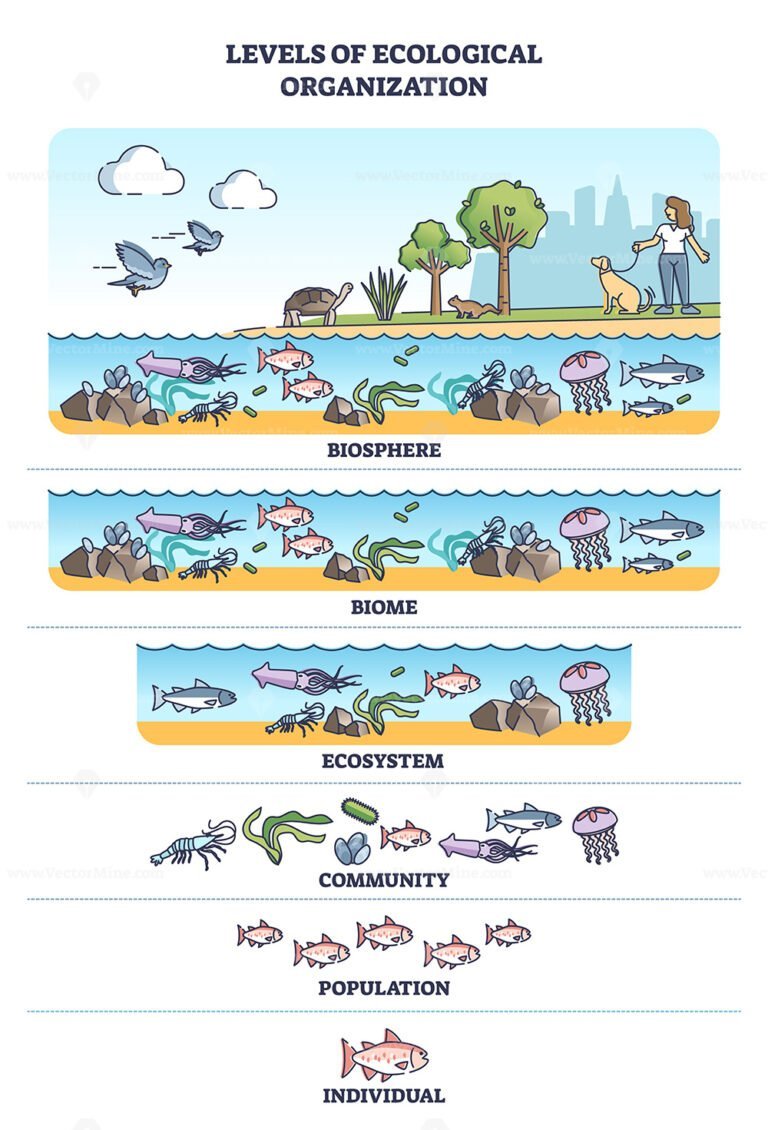
Levels of ecological organization with organism division outline diagram VectorMine
Here are the levels of organisation, from the smallest to the largest: Organism → Population → Community → Ecosystem → Biome → Biosphere Ecological Level 1 - Organisms It is the simplest level of organisation, which includes both organisms with one cell and organisms with more than one cell.

Organigrama Mind Map
Ecological Hierarchy. Studying all living things and their environments would be a huge undertaking. Generally, the study of ecology is made more manageable by organizing the biological world into a nested hierarchy. Figure \(\PageIndex{4}\): This figure shows levels of organization in nature, from the individual organism to the biosphere.

Levels of Ecological Organization Definition, Examples
Ecological Levels of Organization: Definition | Vaia Biology Heredity Ecological Levels of Organization Ecological Levels of Organization Picture the Earth. The Earth is a gigantic place, isn't it? Now imagine zooming in. You might picture mountain ranges and oceans.
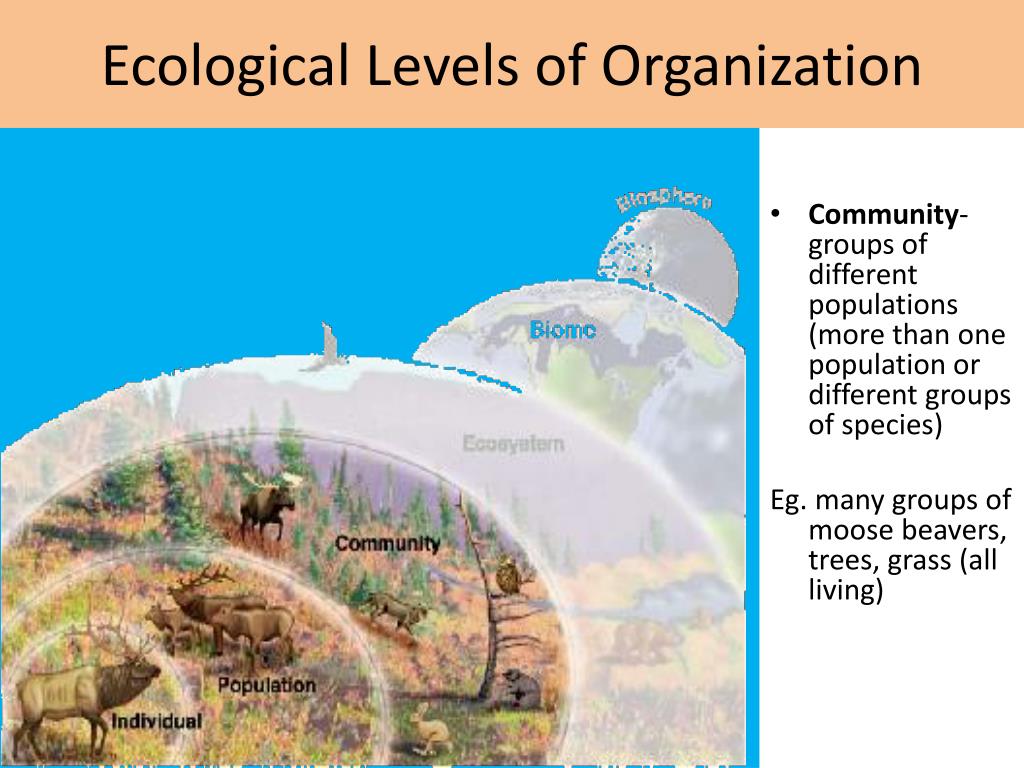
PPT Ecological Levels of Organization PowerPoint Presentation, free download ID5442069
Levels of organization in ecology include the organism, population, community, ecosystem, and biosphere. An ecosystem is all the living things in an area interacting with all of the abiotic parts of the environment. Explore More Use the resource below to answer the questions that follow.
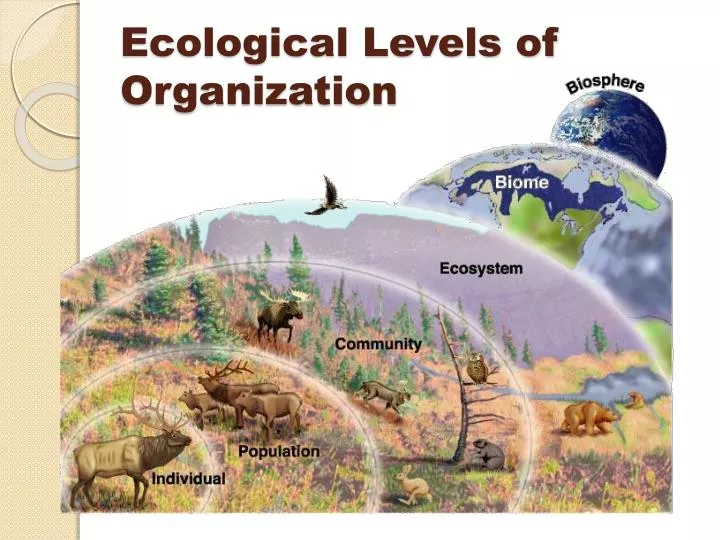
PPT Ecological Levels of Organization PowerPoint Presentation, free download ID3723430
The following points highlight the seven major ecological levels of organisations. The ecological levels are: 1. Organisms 2. Population 3. Biological Community 4. Ecosystem 5. Landscape 6. Biome 7. Biosphere. Ecological Level # 1. Organisms: They make the basic unit of study in ecology.

The basic unit of ecological hierarchy exhibits which of the following attributes?
Ecological organization level 1: individuals or organisms - with examples Ecological organization level 2: population - with examples Ecological organization level 3: community - with examples Ecological organization level 4: ecosystem - with examples Ecological organization level 5: biome - with examples
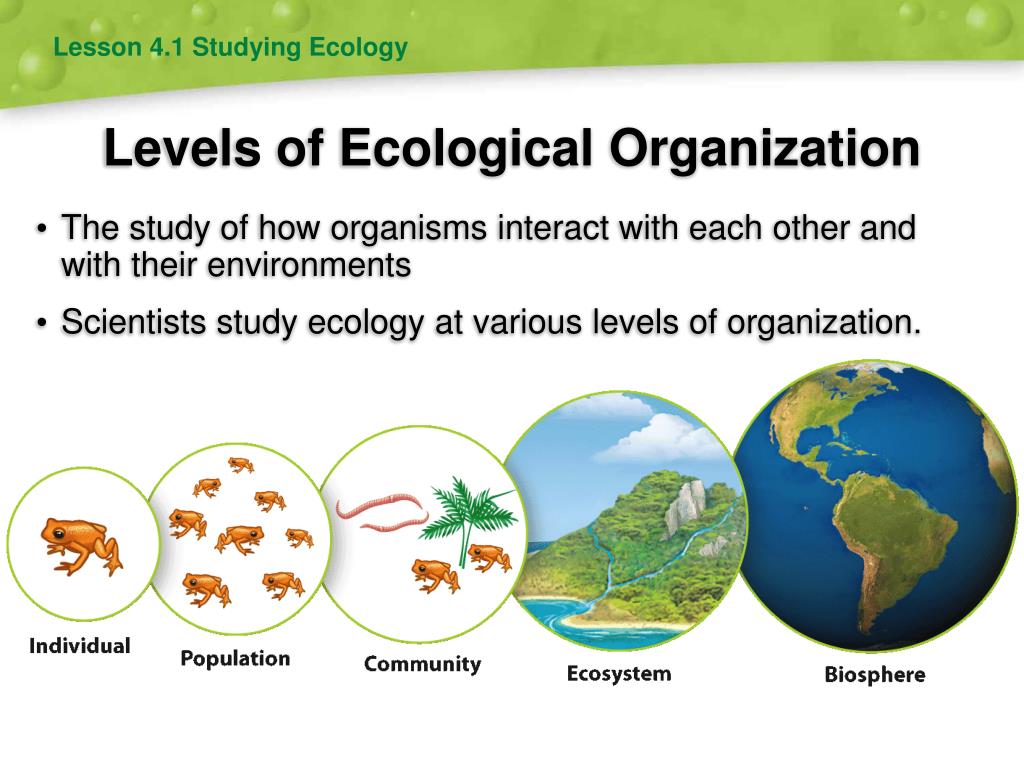
6 Different Levels Of Organization That Ecologists Study Study Poster
1. INTRODUCTION. Ecological interactions affect key aspects of biodiversity across all levels of organization (Levin 1992, Margalef 1963).Individuals are the basic interacting units of ecological systems, and their interactions affect the demography (MacArthur & Levins 1967) and evolution of populations (Benkman 1999).These ecological interactions among individuals in turn connect populations.

6 Levels of Ecological Organization From Largest to Smallest
The Levels of ecological organization Are individual, population, community, ecosystem, biosphere and biome. They describe the disposition of biological organisms in relation to each other, being a classification and organization of the various ecosystems. These ecosystems can be studied in small or large levels.
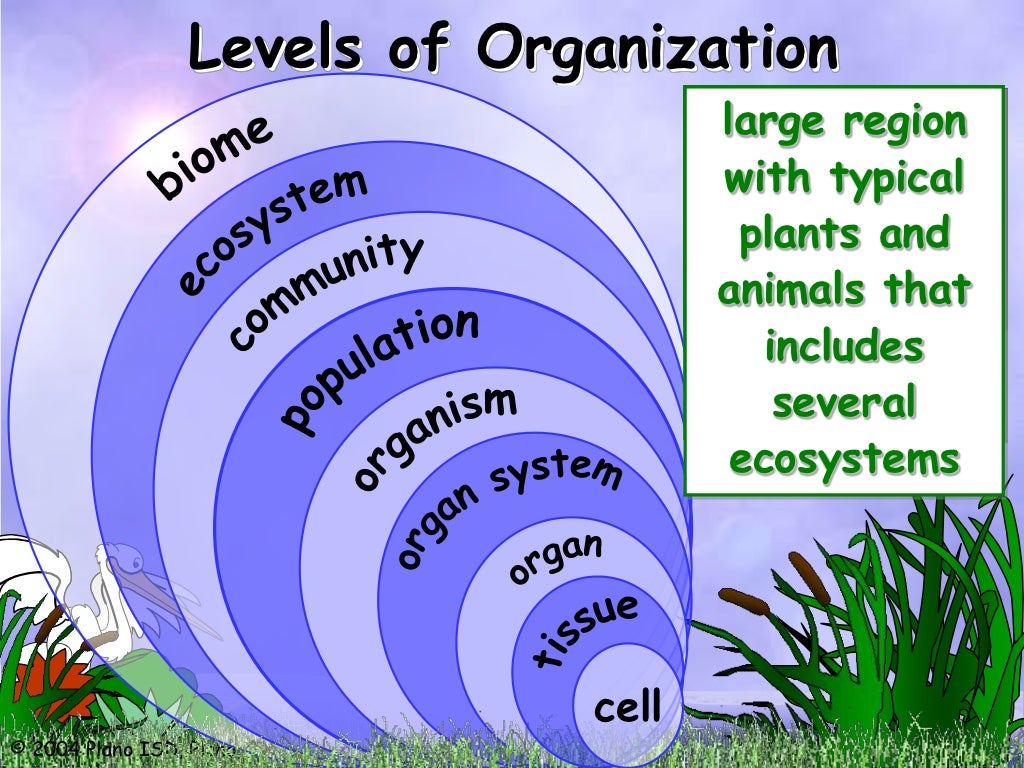
Ecosystems, biotic and abiotic factors
Levels of Organization in Ecology. Stretching from 8 kilometers above the Earth's surface and diving deep as far as 11 kilometers below the surface of the ocean contains our biosphere, the region of the planet where life exists. Within the biosphere there are large geographic regions of similar climates and a characteristic set of organisms.

Levels of Organization in an Ecosystem Diagram Quizlet
Google Classroom Overview of ecology. Biotic and abiotic factors. The different levels of ecology. Key points Ecology is the study of how organisms interact with one another and with their physical environment.

Levels of organization in an Ecosystem • Teacha!
What Are the 6 Levels of Organization in Ecology? Biological organization is a hierarchy of complex biological structures and systems, ranging from atoms at the lowest level to biosphere at the highest, which are used to define life by resorting to what is referred to as the reductionist approach.
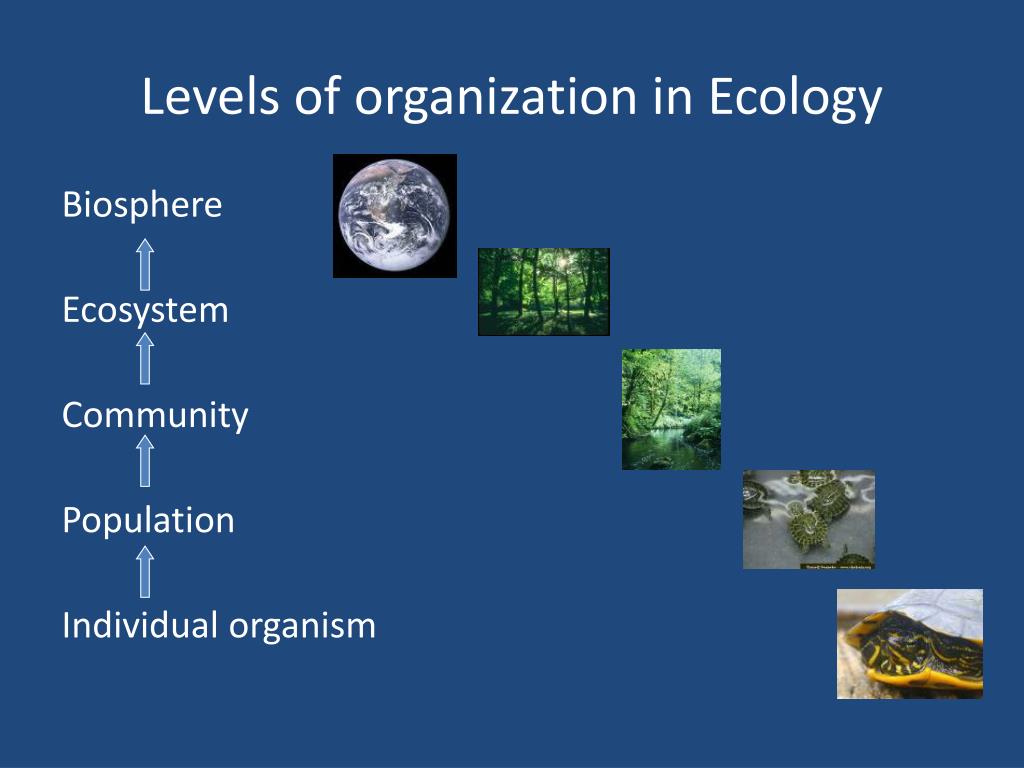
PPT Ecosystems What Are They and How Do They Work? PowerPoint Presentation ID2331592
S3 Revised: Levels of Organization in the Ecosystem - 7th grade 1 Levels of Organization in the Ecosystem Lesson Overview In this lesson, students will examine and analyze various ecosystem components to identify and evaluate ecological concepts such as biotic and abiotic factors, species, populations, communities, ecosystems, and biomes.
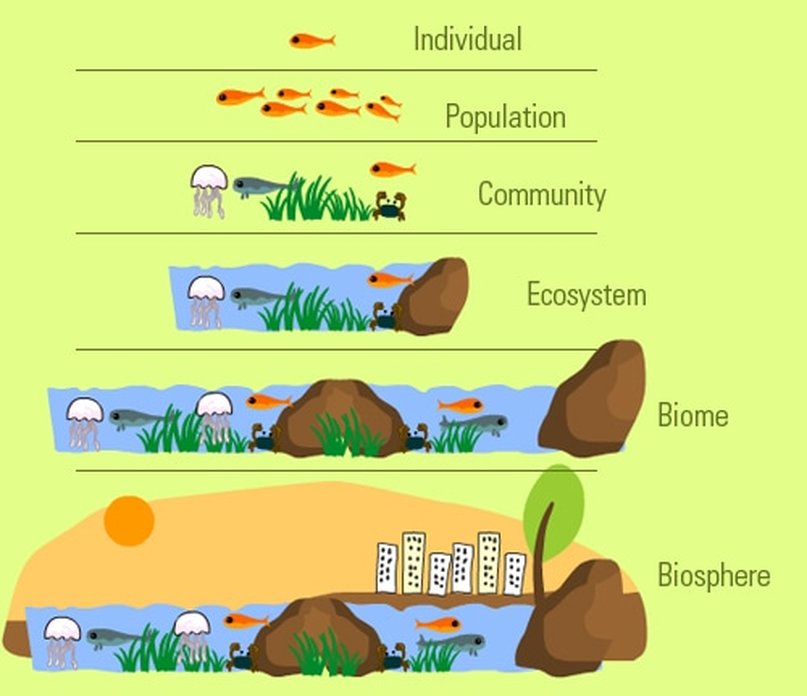
ECOSYSTEMS Yoder's Classroom Connection
Within the discipline of ecology, researchers work at four specific levels, sometimes discretely and sometimes with overlap: organism, population, community, and ecosystem (Figure 1). Figure 1. Ecologists study within several biological levels of organization.

Levels of ecological organization. Human Activity that changes Abiotic and Biotic Factors
The diagram above will hopefully help you visualize how the different ecological levels are related to each other. Individuals make up a population; populations make up a species; multiple species and their interactions make up a community; and multiple species and their interactions make up ecosystems when you include the abiotic factors.
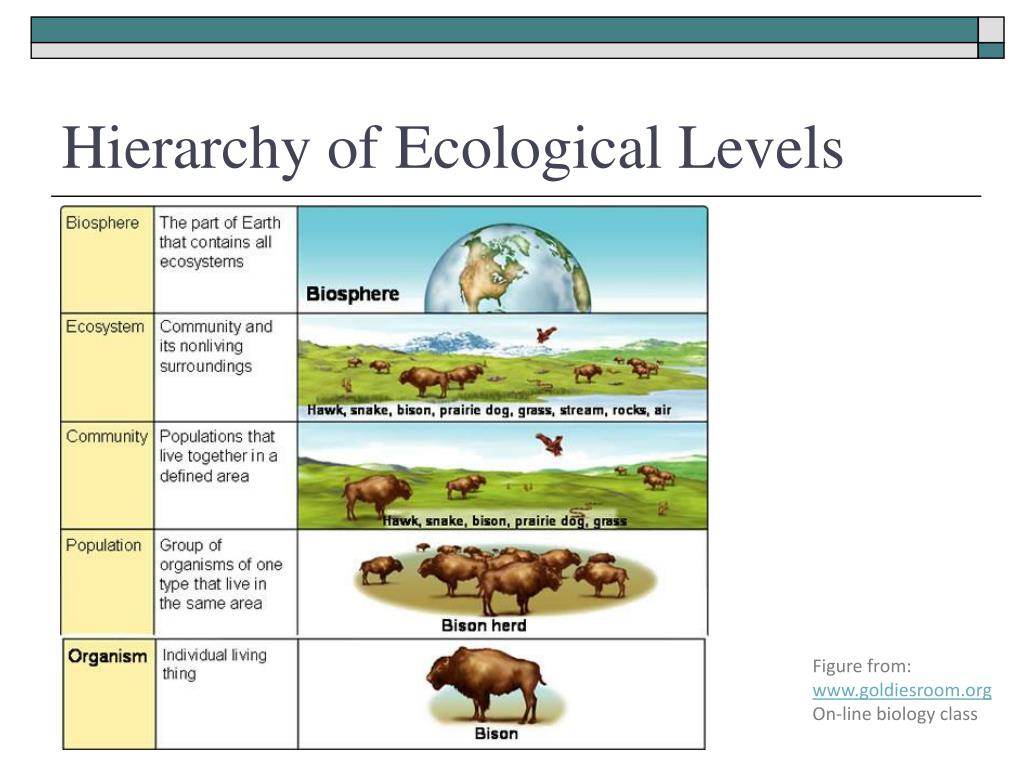
PPT Rangeland Ecology PowerPoint Presentation, free download ID2864060
An organ system is a higher level of organization that consists of functionally related organs. Mammals have many organ systems. For instance, the circulatory system transports blood through the body and to and from the lungs; it includes organs such as the heart and blood vessels. Organisms are individual living entities.

PPT Principles of Ecology PowerPoint Presentation, free download ID4860436
Ecosystem It is a set of all living species and abiotic components existing and interacting in a given area. There is an interaction with both living and nonliving components of the environment. Also Read: Ecosystem Biosphere It is the highest level of organization.